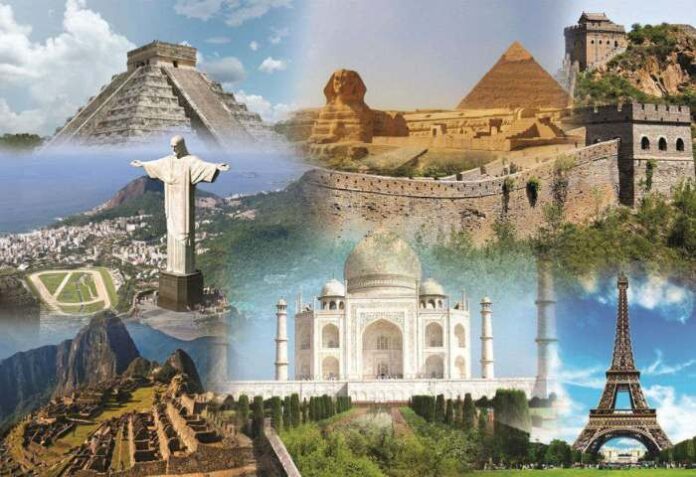The new seven wonders of the world is a campaign that begins in 2000 to select wonders of the world from an assortment of two hundred existing monuments. This campaign would contrast to the already established list of the seven Wonders of the Ancient World. Through the internet or text messaging, people worldwide voted on these new wonders of the world. As over 100 million votes were cast, the final results were announced in 2007. The new seven wonders of the modern world are a series of monuments that have been perceived as the best man-made designs still in presence.
Great Wall of China (China)
The Great Wall of China is one of the ancient landmarks on this world’s wonder list. It is a sequence of fortifications constructed across the northern borders of old Chinese states and Imperial China. The length of the wall is estimated at 13,170 miles (21,200 km). A small section of the wall was constructed during the early 7th century BC, while some stretches were joined together by China’s first emperor, Qin Shi Huang. Most sections of the wall that we know today were built during the Ming Dynasty, between 1368 and 1644. The Great Wall of China was built for a defensive purpose against invading tribes. Apart from defense, it was also used to work with transportation, encouragement of trade, and manage China’s boundaries.
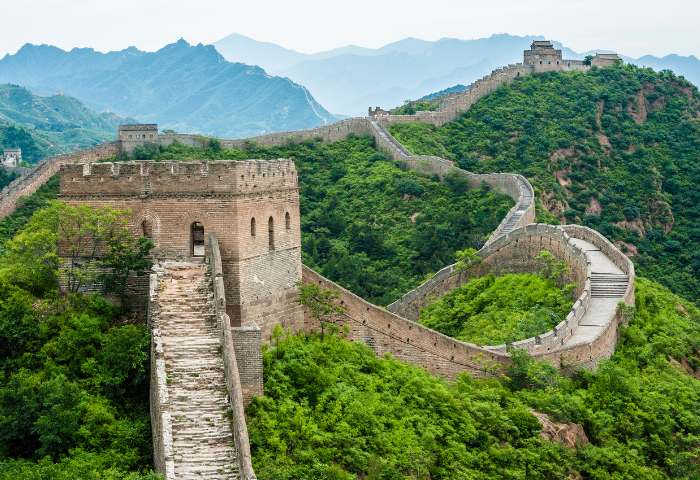
For a long period, the Great Wall of China was not known to the outside world. During the 19th century, it became a most famous tourist attraction when China opened its borders to foreign visitors. It has been recognized as the new seven wonders of the modern world for its historical importance and intellectual engineering principles.
Chichen Itza (Mexico)
Chichen Itza is the oldest city built by the Maya civilization between the 9th and 12th centuries. It is the most famous archaeological site located on the Yucatán Peninsula in Mexico. It’s a UNESCO World Heritage site, and now it got a new status of one among the new seven wonders of the world. This city contains numerous monuments and temples built by the Maya tribes. The site displays many architectural styles, suggestive of central Mexico types and the Puuc and Chenes styles of the Northern Maya lowlands.
The most striking is the Temple of Kukulcán (El Castillo), a Mesoamerican step-pyramid that dominates the focal point of the Chichen Itza. Built by the Maya civilization between the 8th and 12th centuries AD, the pyramid structure is 24m high and an additional 6m high for the temple at the top. The bottom square measures 55.3m.
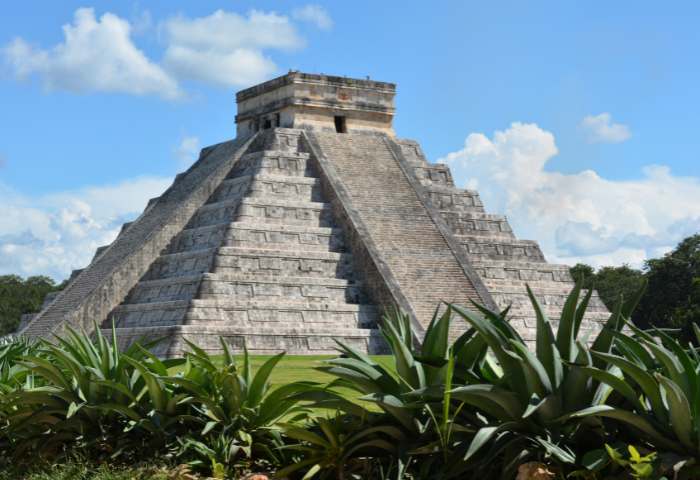
The city fell into decline at some point in the thirteenth century yet kept a sizable populace up until the Spanish defeat of the Yucatan Peninsula during the 1500s. The ruins were re-found and studied by American traveler John Lloyd Stephens in the mid-nineteenth century. Chichen Itza was one of the biggest Maya urban communities and it was likely to have been one of the legend great cities, or Tollans, alluded to in later Mesoamerican writing.
Christ The Redeemer (Brazil)
Christ the Redeemer, a mammoth statue of Jesus, stands atop of the Corcovado mountain in Rio de Janeiro. It is the giant Art Deco sculpture in the world. The Catholic group of Rio made a second proposition for a milestone sculpture on the mountain in 1920. The group conducted an event to collect donations and signatures to support the structure of the statue. The association was propelled by what they saw as ‘Godlessness’ in the general public. The statue of Christ the Redeemer was chosen as a symbol of peace.
The structure was created by French sculptor Paul Landowski and built by Heitor da Silva Costa(Brazilian Engineer) along with Albert Caquot (French Engineer). Gheorghe Leonida, a Romanian sculptor, designed the face of Jesus. The giant statue was made of reinforced concrete and soapstone. Construction began in 1921 and was completed nine years later in 1931.

The statue at the top of the Corcovado mountain is 30m high, excluding its 8m base. The arms stretch 28m wide. And it weighs about 635 metric tons. The sculpture has likewise become a social symbol of Rio de Janeiro and Brazil. Christ the Redeemer, the top tourist attraction in Rio de Janeiro, has now been declared as the new seven wonders of the modern world.
The Colosseum (Italy)
The Colosseum in the center of Rome city is an oval-shaped amphitheater. It is the biggest old amphitheater at any point fabricated, is as yet the biggest standing amphitheater on the planet today, regardless of its age. This massive structure is built of travertine limestone, brick-faced concrete, and tuff. It was capable of holding 65,000 spectators at a time. This building was used for public events such as gladiatorial contests, animal hunts, executions, re-enactments of famous battles and dramas. During the 5th and 6th centuries, the building ceased to function as public entertainment. Later, the Colosseum was used as a housing unit, workshop, castle, and Christian shrine.
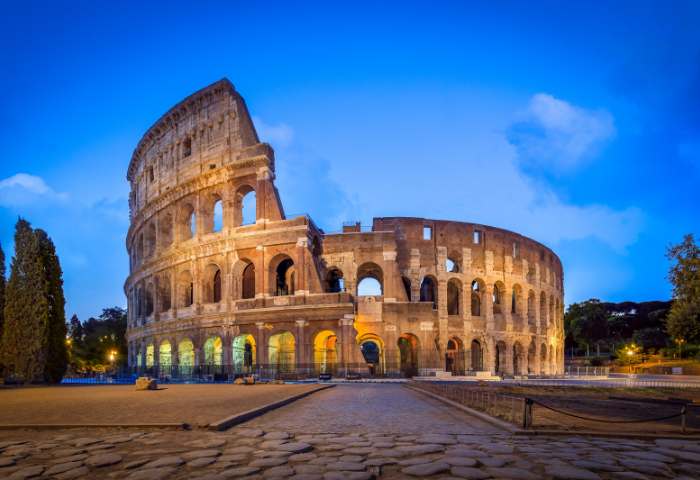
Although considerably demolished in light of quakes and stone-looters, the Colosseum is as yet an icon of Imperial Rome and was recorded as one of the new seven wonders of the modern world. It is also the most popular tourist attraction in Rome, which millions of visitors visit every year.
Machu Picchu (Peru)
Machu Picchu is an Incan citadel that flanks a mountain range in the Cuzco region in Peru. There was a big confusion that remained among scholars in identifying the purpose of Machu Picchu. Later, many archeologists accept that Machu Picchu was constructed as an estate for the Inca emperor Pachacuti between 1438–1472. With polished dry-stone walls, Macchu Picchu was built in a traditional Incan style. The Temple of the Sun, Intihuatana (ritual stone), and the Room of the Three Windows is its primary structures. Most of the buildings on the outside are restored. Nearly 30% of Machu Picchu had been restored, and restoration work continues. In 1981, Macchu Picchu was declared as a Peruvian Historic Sanctuary, and it was recognized as a UNESCO World Heritage site in 1983. Today, Machu Picchu is the new seven wonders of the modern world.
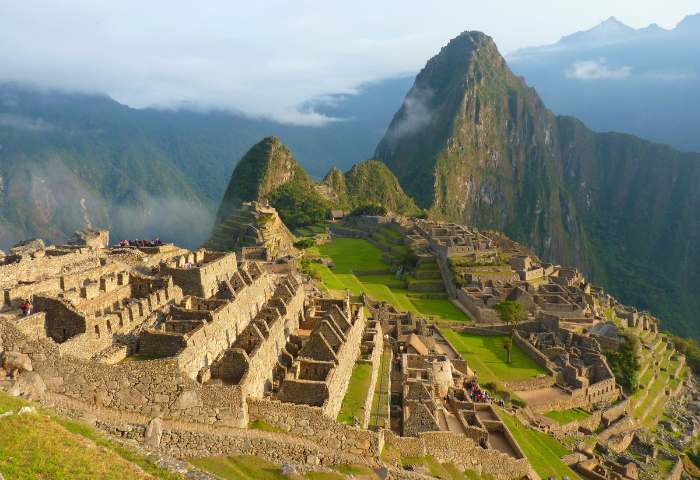
This site is often erroneously alluded to as the “Lost City of the Incas, ” which refers to Vilcabamba’s nearby site. The Incas built the estate around 1450 however deserted it a century after the fact at the hour of the Spanish success. The Incas utilized the mountainous terrain for their potential benefit by using progressed cultivation and water system techniques. Thus, although the place was known only locally, it was unknown to the Spanish during the colonial period. It was familiar to the outside world only after American historian Hiram Bingham made this site famous in 1911.
Petra (Jordan)
Petra, an ancient city, situated in a distant valley, settled among sandstone mountains and rocks. Located in Southern Jordan, it’s a paradise for archeologists. Petra is also called “Red Rose City” because of the stone color from which it is carved. It’s a UNESCO World Heritage site.
Petra has been inhabited since early as 7000 BC. Later, Nabataeans, an Arab tribe, chose this location and made it their capital because it’s an ideal area close to significant trade routes in the Middle East. Generally, Nabataeans are experts in stone carving, agriculture, and rainwater harvesting. They constructed a water system that permitted for lush gardens and agriculture. In addition, Nabataeans carved dwellings, temples, and tombs into the sandstone.
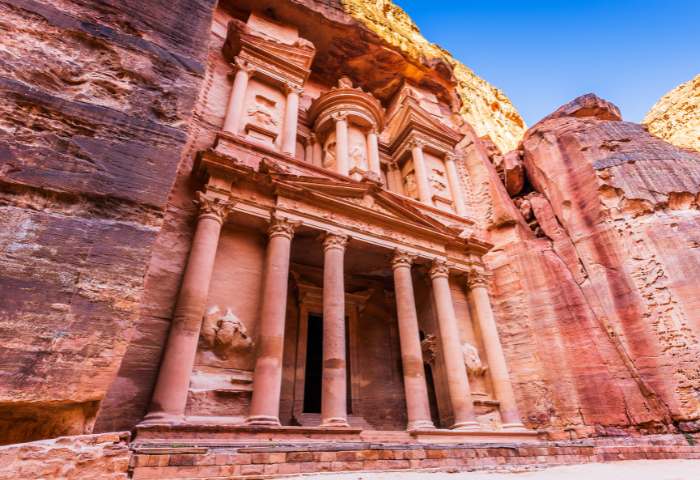
During the 1st century AD, Petra flourished, and its famous Al-Khazneh structure is believed to be the mausoleum of Nabataean king Aretas IV. At that time, Petra reportedly had a population of 20,000 people. However, Petra began to decline as marine trade routes emerged, and a major earthquake in 363 CE damaged many structures. Another jitter attack in 551, Petra was gradually deserted. The ruins were re-discovered by Johann Ludwig Burckhardt (Swiss explorer) in 1812, which was the first time that the Western world had known about the city’s presence. The British archaeologists and scholars excavated and surveyed Petra in 1929. Now, Petra is one among the new seven wonders of the modern world.
Taj Mahal (India)
The Taj Mahal is the most popular mausoleum complex in the Indian city of Agra. Sits on the banks of the Yamuna river, it is one of the most iconic structures in the world. The Mughal emperor Shah Jahan, who governed India from 1628-1658, had commissioned the building. It was built to house the tomb of his lovable wife, Mumtaz Mahal, who passed away during childbirth. The tomb is the midpoint of a seventeen-hectare complex, including a guest house, mosque, spacious garden, and reflecting pool. Shah Jahan was also buried in the mausoleum next to his late wife.

The mausoleum was constructed between 1632 and 1643, but the whole Taj Mahal complex was completed in its entirety in 1653. Over 20,000 workers and 1000 elephants were used to build this world wonder. The construction cost of the Taj Mahal was estimated to be about 32 million rupees at the time. The tomb is made of ivory-white marble that features semiprecious stones in geometric and floral patterns.
The Taj Mahal is regarded as a great example of Mughal architecture, and for being a stunning Muslim art in India, it was designated as a UNESCO World Heritage site. Moreover, as it attracts millions of tourists every year, the Taj Mahal was declared as the new seven wonders of the modern world.
